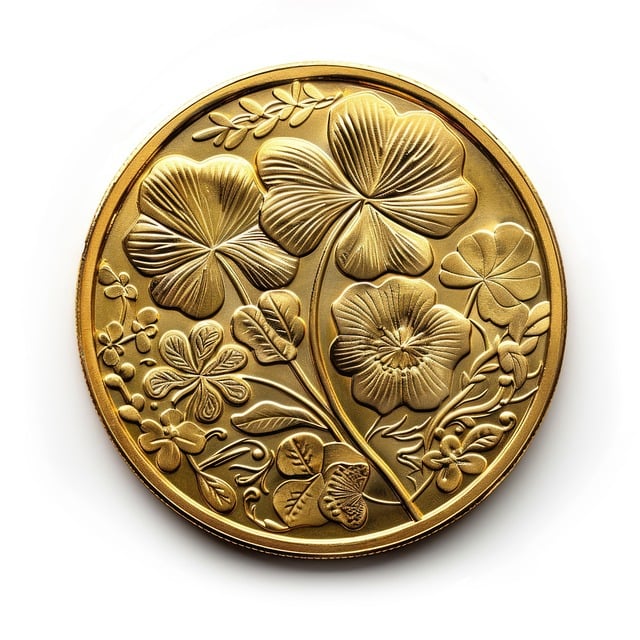A self-directed IRA allows for diversifying retirement investments beyond traditional options to include real estate, precious metals, and private business interests. Precious metals like gold are favored for their stability and value as a hedge against inflation and currency devaluation. Investors must work with an experienced custodian who handles the purchase, storage, and administrative aspects in line with IRS regulations, ensuring the metals meet specific purity standards. Transitioning existing retirement funds to a self-directed IRA for gold investments involves selecting a specialized custodian, rolling over funds, or making new contributions while adhering to IRS guidelines. Investors can then choose from a range of IRS-approved precious metals, like American Gold Eagles, Canadian Gold Maple Leafs, and Austrian Gold Philharmonics, all of which must be sourced through approved dealers to maintain the tax-advantaged status of the IRA. The custodian stores these metals in an IRS-approved depository to guarantee compliance. When selecting a trustee and custodian for this type of IRA, it's crucial to ensure they have expertise in managing physical commodities and adhering to IRS regulations. Additionally, investors must carefully consider the type of gold that aligns with their financial goals and risk tolerance, storage options, and market value, all while maintaining IRS compliance for a successful investment strategy within their retirement portfolio.
Navigating the complexities of retirement investment strategies often leads investors to explore unconventional avenues such as precious metals. Among these, gold stands out as a perennial store of value and hedge against inflation. This article delves into the process of transforming an Individual Retirement Account (IRA) into a tangible asset portfolio by introducing the concept of self-directed IRAs specifically designed for precious metals. We will guide you through understanding these accounts, the steps to set them up, adhering to IRS regulations, selecting a reputable trustee and custodian, and determining the optimal type of gold for your retirement investment portfolio. With insights into each aspect, you can confidently diversify your retirement savings with the enduring value of gold.
- Understanding Self-Directed IRAs for Precious Metals Investment
- Steps to Set Up a Self-Directed IRA for Gold
- IRS Rules Governing IRA Investments in Gold
- Selecting a Trustee and Custodian for Your Precious Metals IRA
- Choosing the Right Type of Gold for Your IRA Investment
Understanding Self-Directed IRAs for Precious Metals Investment

When considering the addition of physical gold or other precious metals to your retirement portfolio, understanding self-directed IRAs is paramount. Traditional IRAs typically limit investments to stocks, bonds, and mutual funds within a custodian-managed account. In contrast, a self-directed IRA provides the flexibility to hold a diverse range of assets, including real estate, precious metals, and even private business interests, all of which can potentially offer different risk and return profiles than traditional investments. Precious metals, in particular, have long been favored for their historically stable nature and intrinsic value as a hedge against inflation and currency devaluation. Investors must choose a custodian that specializes in self-directed IRAs to facilitate the purchase, storage, and administration of these tangible assets within an IRA framework. It’s important to adhere to the IRS regulations regarding the types and purity of metals allowed, as well as the proper protocol for taking delivery and maintaining custody of these investments to ensure they remain within the qualified retirement plan guidelines. This due diligence ensures that your investment in precious metals serves its intended purpose: to bolster the overall health and diversity of your IRA.
Steps to Set Up a Self-Directed IRA for Gold

To facilitate the transfer of existing retirement funds into a self-directed IRA that permits gold investments, you must first locate a custodian who specializes in such accounts. The custodian will guide you through the process and ensure your assets are managed according to IRS regulations. Once you’ve selected a reputable custodian, you can initiate the transfer by either rolling over funds from an existing retirement account or making a new contribution if eligible. It’s imperative to coordinate with your current plan administrator to facilitate this transfer directly, avoiding any potential taxable event.
After establishing the self-directed IRA with a custodian, you may proceed to select the type of precious metals you wish to include in your portfolio. The IRS stipulates specific purity and eligibility requirements for gold holdings within an IRA; thus, it’s crucial to acquire metals that meet these standards. Your custodian can provide a list of approved metals, which typically includes American Gold Eagles, Canadian Gold Maple Leafs, and Austrian Gold Philharmonics, among others. Once you’ve identified the gold products you desire, your custodian will arrange for their purchase and transfer to an approved depository. This depository ensures the security and integrity of your investments, in line with IRS regulations.
IRS Rules Governing IRA Investments in Gold

The Internal Revenue Service (IRS) has established specific rules that govern the investment of individual retirement accounts (IRAs) in gold and other precious metals. As per the IRS, a self-directed IRA can hold gold coins, gold bars, and gold bullion provided they meet certain fineness or purity criteria. Specifically, for coins, the content must be 99.9% pure or greater, 99.5% for bars and wafers, and 99.95% for round shape goods. These assets must be held by a trusted custodian or in an IRS-approved depository if the account holder does not have direct control over the investment.
Furthermore, the gold within an IRA must be acquired from approved sources and cannot be acquired directly from the IRA holder or any entity that they control. Transactions between the IRA and a disqualified person are strictly prohibited to maintain the tax-advantaged status of the account. The IRS mandates annual reporting and record-keeping for all IRA investments, ensuring transparency and compliance with the rules set forth in Publication 590. Adherence to these guidelines is crucial for maintaining the tax-deferred or tax-exempt status of IRA savings when invested in gold. It’s imperative for investors to work closely with knowledgeable professionals and custodians who understand the complexities of these rules to ensure that their IRA investments in gold are compliant.
Selecting a Trustee and Custodian for Your Precious Metals IRA

When transitioning traditional retirement savings into a self-directed IRA with a focus on precious metals, selecting a trustee and custodian who specialize in such assets is paramount. The trustee, often linked with the custodian in this context, oversees the administration of your IRA, ensuring compliance with IRS regulations. This entity must be well-versed in the nuances of holding physical commodities like gold, silver, platinum, and palladium within an IRA. The chosen trustee should facilitate the purchase, storage, and auditing of these metals according to IRS standards.
The custodian, on the other hand, is responsible for safegukeeping your physical precious metals holdings. They must maintain a secure, insured, and segregated storage solution for your assets. It’s crucial to select a reputable custodian with experience in precious metals IRA storage, as they will provide regular account statements and ensure that the metals meet the purity and fineness requirements set forth by the IRS. Both the trustee and custodian should be transparent about their processes, fees, and capabilities to handle your precious metals investments effectively within an IRA framework. Carefully vetting these entities is essential to navigate this investment strategy confidently and compliantly.
Choosing the Right Type of Gold for Your IRA Investment

When considering the conversion of a traditional IRA to a self-directed IRA that includes gold investments, it’s crucial to evaluate the type of gold that aligns with your financial objectives and risk tolerance. The Internal Revenue Service (IRS) stipulates specific guidelines for IRA-eligible precious metals, which include gold coins, bars, and bullion that meet certain fineness or purity standards. Among the acceptable options are American Gold Eagles, Canadian Gold Maple Leafs, and Austrian Gold Philharmonics, as well as other comparable gold products.
The choice between different types of gold can significantly impact your investment’s performance. For instance, coins may have a premium over the spot price due to collectibility, whereas bars and bullion typically have lower premiums. Additionally, the diversity of available gold types allows investors to balance their portfolio by selecting between different weights, sizes, and mintages. It’s also advisable to consider the storage requirements and potential costs associated with different gold forms. For example, coins might be easier to store at home within IRS-approved monetary institutions, while larger bars often require secure, third-party depositories to ensure compliance with IRS rules. Investors should carefully research and consult with financial advisors or precious metals specialists to select the right type of gold for their self-directed IRA investment, ensuring it aligns with their long-term investment strategy and IRS regulations.
When considering the inclusion of physical gold within your Individual Retirement Account (IRA), transitioning to a self-directed IRA that accommodates precious metals investments is a prudent step. The process, regulated by the Internal Revenue Service (IRS), involves careful selection of a trustee and custodian, adherence to specific rules, and strategic decisions on the type of gold to invest in. By understanding the framework and following the outlined steps, you can effectively integrate gold into your retirement portfolio, potentially diversifying and securing your assets for the future.
